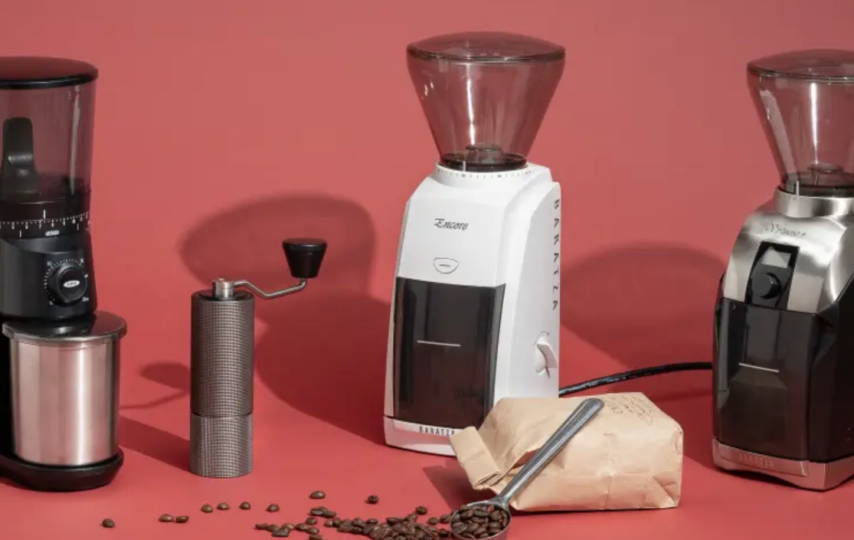Coffee is more than just a beverage; it’s an experience. The aroma of freshly ground beans, the anticipation of that first sip, and the satisfaction of a perfectly brewed cup – it’s a ritual that sets the tone for your day. But to unlock the full potential of your coffee beans, you need the right tool: a quality coffee grinder. In this guide, we’ll explore the art and science of choosing the perfect coffee grinder to enhance your coffee journey.
Why Your Coffee Grinder Matters
Before we dive into the nitty-gritty of selecting a coffee grinder, let’s understand why it matters. A coffee grinder is not merely a convenience; it’s a fundamental element in the brewing process. Here’s why it’s so crucial:
1. Freshness is Key
Coffee beans are at their best immediately after grinding them with Mahlkonig grinder. When beans are ground, their surface area increases, exposing the inner oils and flavors to air. This means the clock starts ticking on freshness as soon as the beans are ground. A quality grinder ensures you can grind beans just before brewing, preserving those delicate flavors.
2. Control Over Grind Size
Different brewing methods require different grind sizes – from coarse for French press to fine for espresso. A good grinder offers a range of grind settings, allowing you to customize your coffee to perfection.
3. Consistency is Queen
Consistency in grind size is vital for an even extraction. Uneven grounds can lead to over-extraction or under-extraction, resulting in a bitter or weak brew. A reliable grinder ensures uniformity in every grind.
4. Flavor Extraction
The grind size directly affects the rate of flavor extraction. A grinder that can deliver precision means you can fine-tune your brew to extract just the right flavors from your beans.
5. Fresher Aromas
The aromas locked inside coffee beans are released upon grinding. A good grinder enhances this aromatic experience, making every cup a sensory delight.
Now that we’ve established the importance of a quality grinder, let’s explore how to choose the perfect one for you.
Types of Coffee Grinders
There are two main types of coffee grinders: blade grinders and burr grinders. Each has its strengths and weaknesses.
1. Blade Grinders
- Affordable: Blade grinders are generally more budget-friendly.
- Simple to Use: They are easy to operate, making them suitable for beginners.
- Versatile: Can be used for grinding spices and herbs as well.
- Inconsistent Grind: Blade grinders often produce uneven grind sizes, which can affect the quality of your brew.
- Heat Generation: The high-speed blades can generate heat, potentially altering the flavor of your coffee.
Who Should Choose Blade Grinders?
- If you’re on a tight budget.
- If you need a grinder for occasional use.
- If you’re not overly concerned about achieving the utmost precision in your grind.
2. Burr Grinders
- Precise Grind Size: Burr grinders offer precise control over grind size, crucial for various brewing methods.
- Consistency: They produce a uniform grind size, resulting in even extraction.
- Preserve Flavor: Burr grinders minimize heat generation, preserving the integrity of your coffee’s flavor.
- Higher Price Range: Quality burr grinders are often more expensive than blade grinders.
- Slightly More Complex: They may require a bit more effort to operate effectively.
Who Should Choose Burr Grinders?
- If you’re serious about your coffee and want to extract the full range of flavors from your beans.
- If you’re willing to invest in a long-term coffee solution.
- If you want the flexibility to experiment with various grind sizes.
Choosing the Right Burr Grinder
Now that you’ve decided on a burr grinder let’s delve into the factors to consider when selecting the perfect one for your needs:
1. Burr Type
Burr grinders come in two main types: conical and flat.
- Conical Burr: These grinders have cone-shaped burrs that are often preferred for their durability and ability to produce consistent grinds. They are ideal for most home coffee enthusiasts.
- Flat Burr: Flat burrs are known for their precision in achieving a uniform grind size. They excel in delivering an even extraction, making them a top choice for espresso aficionados.
2. Grind Settings
The versatility of your grinder depends on its range of grind settings. Look for a grinder that offers a variety of options, from extra coarse to extra fine. This flexibility ensures you can experiment with different brewing methods, from French press to pour-over to espresso.
3. Material and Build Quality
Invest in a grinder made of high-quality materials like stainless steel or ceramic. These materials are durable, resist heat, and are less likely to retain odors from previous grinds.
4. Size and Portability
Consider the available counter space in your kitchen. Some grinders are compact and designed for easy storage, while others are bulkier and meant to be a permanent fixture.
5. Price Range
Quality comes at a price, but that doesn’t mean you need to break the bank. Set a budget that aligns with your coffee goals and explore options within that range. Remember that a good grinder is an investment in the quality of your daily brew.
6. Brand Reputation and Reviews
Read reviews and seek recommendations from trusted sources. Established brands known for their coffee grinders, such as Baratza and Breville, often have a solid reputation for quality and customer support.
Maintaining Your Coffee Grinder
Once you’ve chosen the perfect coffee grinder, it’s essential to maintain it properly to ensure it serves you well for years to come:
- Regular Cleaning: Clean your grinder regularly to prevent the buildup of coffee oils and residue. A clean grinder ensures the purity of your coffee flavors.
- Burrs Replacement: Over time, burrs may wear out. Check the manufacturer’s guidelines for replacement intervals, and replace them when needed to maintain consistency in your grind.
- Storage: Store your coffee beans in an airtight container away from direct sunlight and heat to preserve their freshness.
- Calibration: If your grinder allows, calibrate it periodically to ensure it grinds at the desired settings accurately.
Conclusion
Choosing the right coffee grinder is the first step to elevating your coffee game. Whether you’re a casual coffee lover or a passionate brewer, investing in a quality grinder pays off in every cup you brew. Remember the key factors: burr type, grind settings, material, size, price range, and brand reputation. With the perfect grinder in your arsenal, you’ll unlock the full potential of your coffee beans and savor every sip of your freshly brewed elixir.







